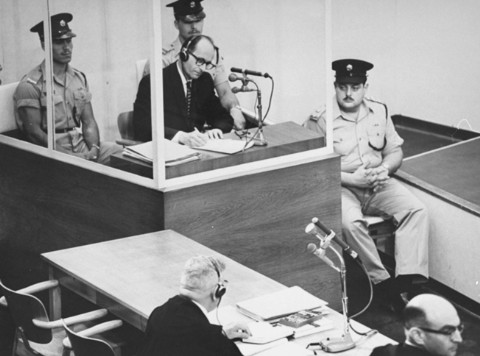The Escape of Adolf Eichmann
The escape of Adolf Eichmann outraged those who fought for justice after the Holocaust. Eichmann was the architect of the annihilation of 6 million Jews during World War Two. By the time WWII had come to an end, Eichmann had fled across the Atlantic to Argentina to escape the authorities. It was not until 1960 that Israel’s intelligence agency tracked down the war criminal and brought him to trial.
Many people have asked how it was possible for Eichmann escape the grasps of those hunting him and make it to the other side of the world.
For one, he was aided by the fact that the War Crimes Investigation Team was very slow in getting organised to try and track him down. It was only in June 1945 that the organisation began to mobilise, but at this stage it was still far too small to cope with the huge list of suspected war criminals.
In a letter to the Secretary of State for War, British Prime Minister Clement Attlee expressed his concerns:
“It is essential that the persons on whom rests the responsibility for the investigation of war crimes and the bringing to trial of the authors should be officers with drive and energy and that the high priority to be accorded to war crimes matters should be carefully understood.”

While no one could question the commitment of the War Crimes Investigation Team, they still lacked the personnel they needed. Indeed, it is reported that at the end of 1945 the organisation only had 11 members while the list people there were attempting to track down - those on the Allies’ wanted list - number around 50,000.
The team’s slow start gave Eichmann the opportunity to plan his escape before the end of the war. Eichmann disguised himself as a corporal in the German Luftwaffe as he fled Auschwitz, and while the US soldier who caught him were easily able to identify him as a member of the SS because a tattoo he had on his arm Eichmann still escaped the fate that was meant from him by pretending to be Otto Eckmann, who was a junior member of the SS - as a result he was sent to a low security camp and thus, in February 1946, Eichmann was able to escape. From this point on he adopted the identity of a Bavarian businessman who went by the name of Otto Henninger.
Eichmann managed to evade recapture travelling to Bremen, where he plied his trade as a forestry worker. No one knew who he was but when his employer went bust in 1948 he decided to change his trade to a poultry farmer. He could never stop looking over shoulder though; convinced that the authorities were going to catch up with him, Eichmann fled across the Atlantic to Argentina in 1950.
At this point, the War Crimes Investigation Team has increased their efforts in their hunt for those guilty of carrying out wartime atrocities against Allied POWs. As one investigator remarked:
“We weren’t really aware of the big fish. Quite honestly we had enough on our hands with the small fry.”
Mossad, the Israeli intelligence agency, finally tracked him down on 11 May 1960. A group of officers captured him and flew him to Israel on 21 May. The trial was televised and few could believe that such a small, unimpressive figure could be responsible for such evil - the term the “banality of evil” was used to describe Eichmann. Eichmann was put on trial - he was charged with crimes against humanity, for which he was guilty. It carried the death penalty and on 1 June 1960 Eichmann was hanged.
See also: Irma Grese
MLA Citation/Reference
"The Escape of Adolf Eichmann". HistoryLearning.com. 2024. Web.
